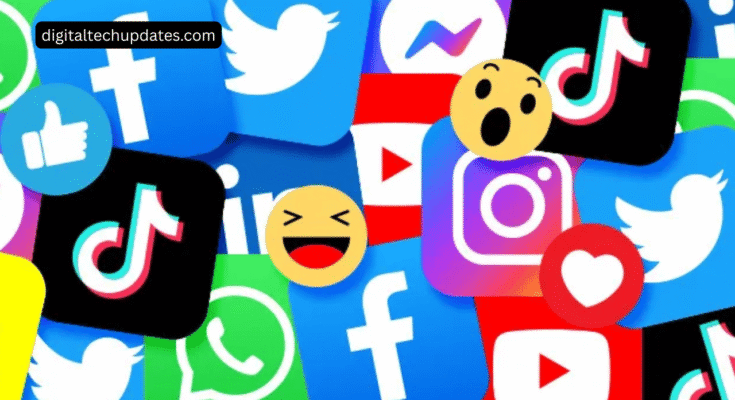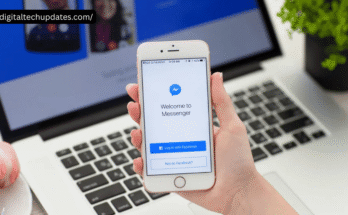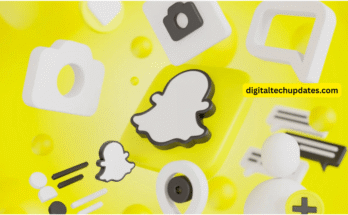In our digital age, social media and native advertising stand out as some of the most effective ways to tell a brand’s story and connect with audiences. When combined, they create a smooth experience that merges content with marketing in a way that traditional advertisements just can’t replicate.
The link between social media and native advertising comes from their common strength in engaging audiences in an organic way, providing valuable content, and building trust, all without disrupting the user experience.
As social platforms continue to evolve and Google places a greater emphasis on user-centric content with its upcoming 2025 algorithm updates, it’s essential for digital marketers and business owners to grasp how these two elements work together.
What Is Native Advertising?
Native ads are a kind of paid ads that look like the part of the site they show up on. They don’t stick out like normal ads or pop-ups, instead, they mix in well with the content, making them less annoying and more fun to look at.
Some examples of native ads:
- Paid posts on news sites.
- Ads in the middle of feeds on Facebook, Instagram, and LinkedIn.
- Ads in the form of videos on YouTube or TikTok.
- Paid posts working with online magazines or blogs by well-known people.
The aim is to share a message that feels real and useful, fitting in just right with the rest of the content.
What Is Social Media Advertising?
Social media ads mean paying to show content on sites like Facebook, Instagram, Twitter (X), LinkedIn, YouTube, and TikTok. Brands use these sites to aim their ads at certain groups with paid posts, tales, and videos.
These ads use info like what users like, how they act, where they are, and who they are to hit the right people at the right time. You can track, grow, and change them easy to meet goals like making more people know the brand, getting more likes, or making more sales.
The Correlation Between Social Media and Native Advertising
The link between social media and native ads comes down to them mixing by how they feel. Social media is the place, and native ads are the way to do it.
In simple terms, social media is where native ads do well. When a paid post fits right in with what users make, that is native ads at work.
Important Correlations:
1.Content Integration
Similar to organic posts, native ads show up in users’ social media feeds.
The distinction between organic and sponsored content is almost imperceptible.
2.User Engagement
Likes, shares, comments, and saves are engagement metrics that are used in both strategies.
Social algorithms increase the reach of native ads that perform well.
3. Personalization
Social media offers audience information for accurate targeting.
That information is used by native advertisements to tailor product placements and narratives.
4.Trust and Authenticity
Because native advertisements seem more organic and unobtrusive, users are more likely to trust them.
This trust is increased by social proof, such as likes, comments, and influencer mentions.
5. Analytics for Performance
Both make use of quantifiable KPIs, including engagement rate, ROI (return on investment), CTR (click-through rate), and CPC (cost per click).
Why Native Advertising Works Best on Social Media Platforms
1. Seamless User Experience
Social feeds are designed for continuous scrolling. Native ads fit naturally into this flow, appearing as part of the user’s organic feed. This increases viewability and engagement while reducing ad fatigue.
2. Advanced Targeting Options
Platforms like Facebook Ads Manager and LinkedIn Campaign Manager allow advertisers to target highly specific audiences using native-style ads, ensuring relevancy and reducing wasted impressions.
3. Creative Flexibility
Social platforms support multiple native ad formats:
Carousel ads
Story ads
In-feed videos
Interactive polls
Shoppable posts
Each of these can tell a story while promoting a product subtly.
4. Data-Driven Optimization
Social media analytics offer deep insights into audience behavior, helping marketers fine-tune native ad campaigns for maximum ROI.
The Evolution of Social Media and Native Advertising
Early Stage: Disruptive Ads
In the early 2010s, most social media ads were disruptive banner-like visuals that interrupted user experience.
Growth Stage: Sponsored Posts
Platforms like Facebook and Twitter introduced sponsored posts, marking the birth of native advertising within social ecosystems.
Maturity Stage: Creator and Influencer Collaborations
Now in 2025, influencer collaborations and branded content dominate native strategies. Social platforms have integrated native ad tools (like Instagram’s “Paid Partnership” label) to maintain transparency.
Benefits of Integrating Social Media and Native Advertising
Higher Engagement Rates
Native ads blend naturally, generating up to 60% higher engagement than traditional display ads.
Improved Brand Recall
Because users interact willingly with native ads, they remember the brand message more effectively.
Enhanced Credibility
Social proof (likes, comments, and shares) enhances trust — a crucial factor under Google’s E-E-A-T (Experience, Expertise, Authoritativeness, Trustworthiness) guidelines.
Cost Efficiency
Compared to display ads, native social ads often have lower CPC and higher conversion rates due to relevance.
Algorithmic Advantage
Platforms like Instagram and TikTok reward ads that perform well organically, offering better reach without increased costs.
Popular Social Media Platforms Using Native Advertising
1. Facebook
Facebook’s “Sponsored” posts are a classic example of native advertising. They appear in-feed, matching the look of organic posts while being labeled subtly as ads.
2. Instagram
Instagram’s “Sponsored” tags under reels or stories showcase how native ads merge creativity with visual storytelling.
3. LinkedIn
LinkedIn’s Sponsored Content and InMail campaigns let brands reach professionals natively within the platform.
4. YouTube
In-feed video ads and influencer product integrations are prime examples of native-style marketing on YouTube.
5. TikTok
TikTok’s Spark Ads allow brands to promote user-generated content directly — the most authentic form of native advertising today.
How Brands Use Social Media Native Ads Effectively
Example 1: Nike on Instagram
Nike often uses short-form videos that show athletes using its products without explicitly selling — this subtlety drives authenticity.
Example 2: Airbnb on Facebook
Airbnb’s Facebook native campaigns feature traveler stories and destinations, focusing on experiences rather than bookings.
Example 3: Adobe on LinkedIn
Adobe’s LinkedIn native campaigns showcase productivity tips and design tutorials that integrate product mentions naturally.
These examples highlight that native advertising succeeds when the ad doesn’t feel like one.
SEO and Google’s 2025 Algorithm Impact
In Google’s latest 2025 updates, content relevance and user engagement signals have become crucial ranking factors.
While native ads themselves don’t influence organic rankings, the engagement they drive on social media indirectly supports SEO by:
Increasing branded searches
Boosting referral traffic
Generating backlinks from shared content
Google’s Helpful Content & E-E-A-T Principles Apply:
Ensure transparency: clearly label sponsored content.
Deliver value: native ads must educate or entertain, not just sell.
Build authority: collaborate with verified creators or influencers.
This alignment helps maintain trust and visibility even in paid content ecosystems.
Measuring the Correlation: Metrics That Matter
| Metric | Native Advertising | Social Media Advertising |
|---|---|---|
| CTR (Click-Through Rate) | 0.3%–0.9% average | 0.9%–2.5% average |
| Engagement Rate | Moderate | High |
| Cost per Click (CPC) | $0.50–$1.00 | $0.30–$0.80 |
| Conversion Rate | 2%–5% | 3%–8% |
| Brand Recall | High | Very High |
The overlap shows that native social media ads provide a balanced mix of authenticity and performance, outperforming traditional ad formats.
Best Practices for Combining Social Media and Native Advertising
Align Content with Platform Tone
Create content that feels natural to the platform — light-hearted on TikTok, visual on Instagram, professional on LinkedIn.Leverage Influencers and Creators
Partner with voices your audience trusts. Creator-led native ads outperform brand-only ads by up to 40%.Focus on Storytelling, Not Selling
Audiences engage with experiences, not sales pitches.Use UGC (User-Generated Content)
Repurpose organic posts into paid native campaigns for authenticity.Test and Optimize Continuously
Use A/B testing to refine messaging, visuals, and targeting.Disclose Sponsorships Transparently
Transparency builds credibility and aligns with both platform rules and Google’s E-E-A-T principles.
The Future of Social Media and Native Advertising
In 2025 and beyond, expect further convergence of AI, personalization, and content immersion in native advertising.
Emerging Trends:
AI-Driven Ad Personalization: Machine learning tailors ad experiences to user mood and behavior.
Augmented Reality (AR) Ads: Interactive product try-ons within social platforms.
Voice and Audio Integration: Native ads through podcasts and voice assistants.
Micro-Influencers: Authentic small creators will dominate brand partnerships.
As privacy laws evolve and third-party cookies phase out, native ads powered by first-party social data will lead digital marketing strategies.
Frequently Asked Questions (FAQs)
Native advertising focuses on blending ads within content, while social media advertising is the platform-based distribution of those native-style ads.
Because it aligns with user expectations — appearing as part of their feed rather than interrupting it.
3. Does native advertising improve SEO?
Indirectly, yes. It increases engagement and brand visibility, leading to better organic signals and traffic.
Sponsored posts, branded videos, influencer collaborations, and story ads are all examples of native social ads.
5. How can small businesses use native ads effectively?
Start with low-budget in-feed ads on Facebook or Instagram. Use storytelling, clear visuals, and emotional connection instead of hard selling.
Conclusion
The correlation between social media and native advertising is clear — they are complementary forces that amplify each other’s impact.
Social platforms offer data, reach, and engagement, while native advertising provides authenticity, storytelling, and trust. Together, they form the backbone of modern digital marketing in 2025.
To succeed, focus on:
Creating helpful, human-first content.
Maintaining transparency in paid partnerships.
Blending ads seamlessly into user experiences.
When done right, native advertising on social media doesn’t just promote — it connects, engages, and builds lasting relationships between brands and audiences.




